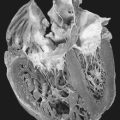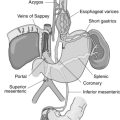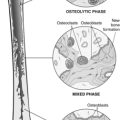31. Fabry’s Disease
Definition
Fabry’s disease is a genetic, congenital, X-linked disorder of glycosphingolipid metabolism that is progressive, destructive, and potentially fatal.
Incidence
Internationally, among males, the incidence of Fabry’s disease is 1:40,000 to 1:60,000. Among all live births it is 1:80,000 to 1:117,000. Because Fabry’s disease is an X-linked inherited disease, it is males who are affected almost exclusively.
Etiology
Alpha-galactosidase A (α-GAL A) deficiency results from an abnormality on the long arm of the X chromosome, specifically Xq22.
Signs and Symptoms
• Acroparesthesias (episodic and chronic)
• Angiokeratomas
• Aplasia
• Cardiomegaly
• Conduction defects
• Diplopia
• Dysarthria
• Hemianopia
• Hemiparesis
• Internuclear ophthalmoplegia
• Left ventricular hypertrophy
• Lens opacities
• Myocardial infarction
• Nystagmus
• Peripheral neuropathy
• Progressive renal failure
• Proteinuria
• Retinal and conjunctival vascular malformations
• Sensory loss
• Valvular deficiencies
• Vertigo
Medical Management
The chronic joint pain associated with Fabry’s disease is frequently treated with corticosteroid medications. If the steroid therapy is inadequate or ineffective, alternative pharmacologic therapy may consist of phenytoin, diphenylhydantoin, carbamazepine, or gabapentin.
Replacement of the deficient enzyme, alpha-galactosidase, is highly touted and reportedly works well.
Gastrointestinal aspects of Fabry’s disease have been shown to improve with the administration of the prokinetic drug metoclopramide.
Antiplatelet medications have been administered to prevent secondary stroke, but efficacy has not been demonstrated. Embolic concerns originating from cardiac manifestations of Fabry’s disease may be treated with anticoagulants.
The patient with Fabry’s disease may be treated for renal failure associated with the disease. Kidney transplantation is indicated for renal failure; however, the progressive nature of the disease may continue unabated through other organ systems.
Transplantation of fetal liver is an experimental procedure that has been tried in a small number of patients. This surgical intervention is undertaken with extreme caution.
Complications
• Dementia
• Hypertrophic cardiomyopathy
• Intracranial hemorrhage
• Left ventricular hypertrophy
• Pulmonary hypertension
• Renal failure
• Seizures
Anesthesia Implications
The patient should undergo a comprehensive preoperative eye examination to determine the degree of ophthalmic changes that have occurred as a result of the disease. This will facilitate identification of any ocular changes that result from surgical positioning and/or intraoperative hemodynamic extremes. The patient with Fabry’s disease frequently develops lens opacity because of the disease.
The patient’s blood urea nitrogen and creatinine levels should be measured preoperatively to determine the degree of renal dysfunction that has been caused by the disease.
A preoperative electroradiogram and echocardiogram should be performed to determine the presence of any myocardial ischemia, valvular lesions, congestive heart failure, or ventricular outflow tract obstruction. A pharmacologic cardiac stress test may be needed for a patient in whom significant coronary disease is suspected, particularly with a sedentary patient. Cardiac catheterization may be necessary if pulmonary hypertension is indicated by an abnormal echocardiogram or if the stress test results are abnormal.
The patient’s temperature regulation may be abnormal as a result of lipid accumulation in the brainstem and cerebellar tissues. Methods to actively warm and/or cool the patient should be readily available.
The anesthetist should have drugs prepared in advance and immediately at hand to treat both sudden hypotension as well as sudden hypertension. In a patient with Fabry’s disease autonomic neuropathy is highly probable.
Oropharyngeal lesions may be present and may interfere with securing the airway. The selection of the agent for maintenance of general anesthesia should be determined by the patient’s co-morbidity(ies).
Postoperative pain control may be difficult and may depend on the effectiveness of medications administered preoperatively. If morphine effectively controlled pain preoperatively, it may be successful postoperatively. If the patient requires the addition of carbamazine or phenytoin for successful pain control, that regimen should continue postoperatively.
A patient who takes carbamazepine or phenytoin regularly may metabolize nondepolarizing muscle relaxants more quickly than other patients. Dosing and re-dosing should be guided by the use of a peripheral nerve stimulator.
Regional anesthesia is a useful and viable alternative for a patient with Fabry’s disease. The anesthetist must realize that hemodynamic instability associated with the sympathectomy produced by the blockade may be exaggerated by the patient’s autoimmune instability. However, for a patient with progressive lesions of the central nervous system, central blocking techniques are relatively contraindicated.
Patient temperature should be monitored closely. The patient should not be subjected to environmental temperature extremes. The ambient temperature should be stable because of the potential precipitation of acute febrile episodes and/or extremity pain, especially in a patient who exhibits hypohidrosis.
Anticholinergic medications should be avoided in a patient who exhibits hypohidrosis.







